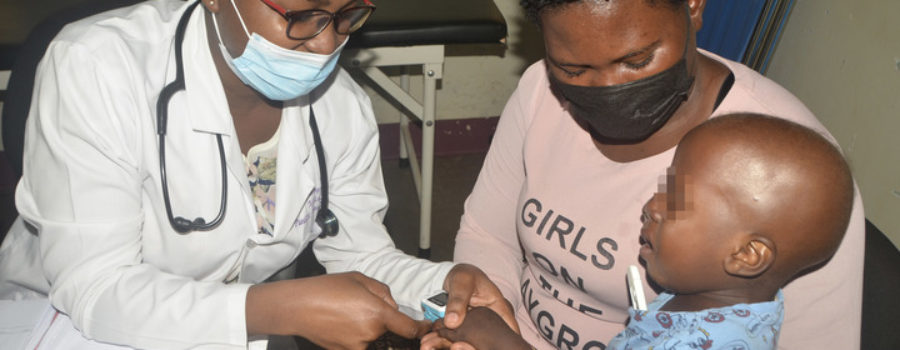Two weeks ago, I wrote about the numerous difficulties we overcame to begin our newest clinical trial. This study evaluates the safety of a new drug, acronym “DON”, that will be given in addition to standard therapy for children with cerebral malaria. In drug testing like this, one first evaluates safety in animals before moving to people. After the drug is proven safe in humans (in a Phase I clinical trial, like this one), a separate clinical trial evaluates if it actually does what one hopes, in this case decreases death and disability from the deadliest form of malaria.
The seemingly unending 2.5 year struggle to obtain the 5 approvals needed to begin this study affected both my mood and attitude toward just about everything in my life. Thank you to everyone who listened to my rants and talked me down. I am extra thankful to my ever-patient spouse, Jones, and my closest colleague on the project, Brittany Riggle.
Brittany is the laboratory scientist who did many of the studies of DON in animals, the results of which we used to obtain approvals to test the drug in humans. Though the Malawi team and I handled four of the five regulators that needed to approve the study, Brittany dealt with the US Food and Drug Administration (FDA), the most challenging of the bunch. In addition to answering the FDA’s seemingly never-ending questions, concerns and suggestions, she also managed to get the drug into vials, and ship those vials (on dry ice) to Malawi. Though the last two tasks may sound trivial, they are not.
Brittany returned with me to Malawi 2.5 weeks ago to watch us enroll the first human participant in the DON clinical trial. She was excited to see all of her work in animals translate into a clinical trial in humans. Brittany and I landed on a Wednesday afternoon. A week earlier, anticipating all the approvals would come through in time, the Malawi team had scheduled the first patient for the following day. Alas, it was not to be. The FDA had more questions and concerns. And without their approval (Approval #4), we could not get Approval #5. And without Approvals #4 and #5, we could not start.
So instead of watching us enroll patients in the clinical trial she had worked so hard to make happen, she made the best of the situation. She reviewed the many preparations the Malawi team and I had completed. She evaluated whether there were any things we had forgotten. Of course, there were. She helped us work through a couple of important steps that would have been more difficult if she had not made the long trip. Additionally, she came with me to pediatric neurology clinic on Thursday mornings.
The day after tomorrow, we will enroll our first patient. Hopefully this is the start of a journey, one that will end with a shortening of the queue of medical students at Thursday morning’s pediatric neurology clinic.
Thursday’s pediatric neurology clinic is held in two inside rooms. Its schedule is always full. Patients and their families sign in and then wait on long benches, outside but covered from the sun or rain. In one clinic room sits a nurse and a resident in general pediatrics. The resident sees the most complicated patients. In the other room are several medical students, usually eight or so. The medical students are assigned one patient to see during the half day clinic. They first pick up the chart on the top of the large pile. They call out the child’s name and identify the family. The student interviews the mother and examines the child. The student then joins a queue to wait to talk to me. One by one, the families are brought to me and the history recounted. Though the student has already examined the child, I do it again. The student and I then talk about and decide on the path forward to help with the child’s diagnosis (should we get an EEG or a CT scan?) and treatment (which medicine should we use and at what dose?). The student writes a long note in the medical record. I review the note and sign it. The queue shortens by one.
The children who come to Thursday morning neurology clinical are almost all brain injured. The two major causes of brain injury in young children here in Malawi are birth asphyxia (due to suboptimal obstetric care) and cerebral malaria. This past week in clinic, we had four consecutive patients who had survived cerebral malaria but were left with major neurological abnormalities: cerebral palsy, epilepsy, and problems with learning and behavior. This, of course, is why my research focus is pediatric cerebral malaria.This is why Brittany did all her work in the laboratory. This is why we all kept pushing and pushing. Every year the disease kills tens of thousands of African children. Many of those who survive end up in Thursday morning’s pediatric neurology clinic.
In my opinion, it is important for laboratory scientists (just like physicians) to see the disease they are working to better prevent or treat. I think Brittany’s seeing the many children who had survived cerebral malaria but ended up with major disabilities may have made her remember why she has been working so hard. Though I go to clinic every week, Brittany’s presence made me better appreciate why we went through the last 2.5 years of struggle.
Brittany extended her stay once, hoping to watch us enroll the first patient in the clinic trial. She returned to the United States this morning, as flights for the next week are full and she could not extend again. No, she did not see us enroll the first patient in the clinical trial. Approvals from #4 and #5 took longer than we anticipated. Two days ago, everything finally came through. The day after tomorrow, we will enroll our first patient. Hopefully this is the start of a journey, one that will end with a shortening of the queue of medical students at Thursday morning’s pediatric neurology clinic.






